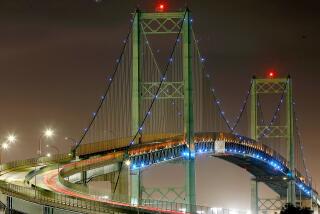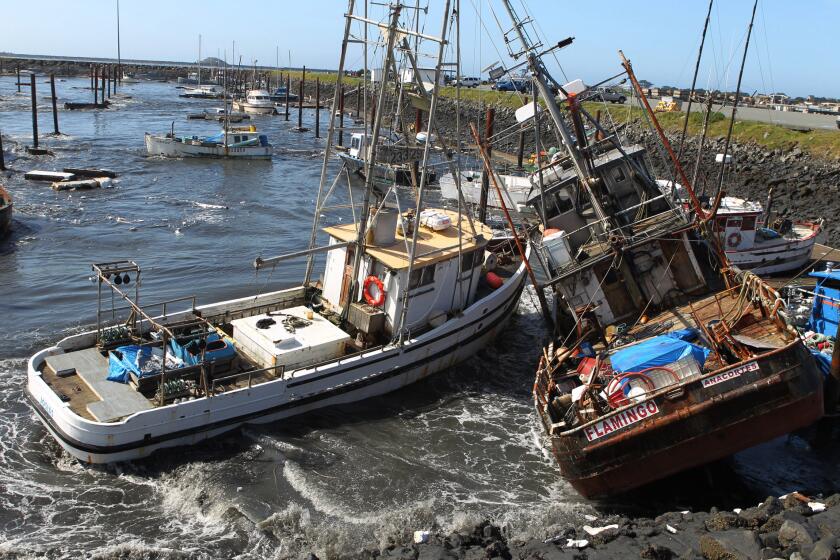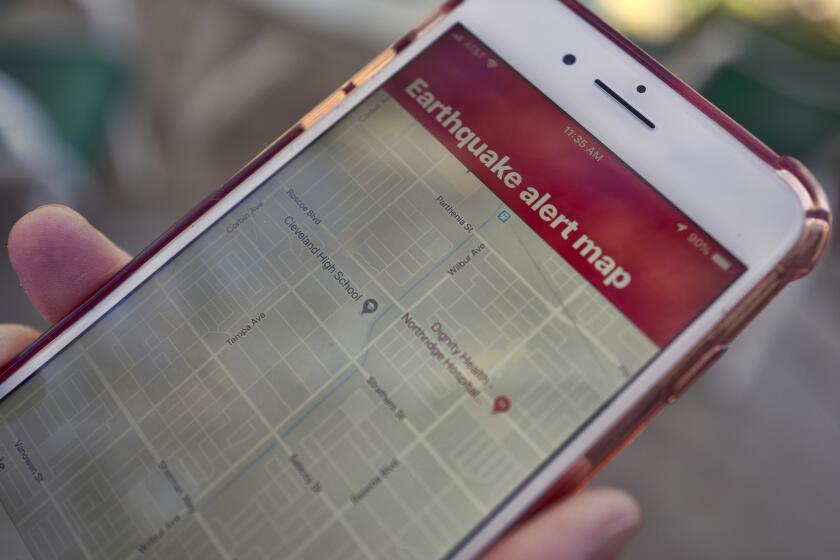Reinforcing Bridges
- Share via
Since the 1971 Sylmar earthquake ruined the Golden State Freeway overpass at the San Diego Freeway and damaged other roadways, The California Department of Transportation has undertaken a statewide program to retrofit existing bridges. But it was the Loma Prieta quake in 1989 that galvanized the current $2-billion program, making bridge retrofitting California’s highest priority in transportation. With Phase I nearly completed and Phase II well underway, no country has strengthened more bridges than the state of California.
In the San Fernando Valley, work has been completed on 27 of the 38 bridges targeted for reinforcement, and 11 projects are either under construction or in the design phase.
The efforts have paid off. Deputy Secretary for Transportation John Pimental points out that all of the 115 bridges in the earthquake-impacted area that had undergone retrofitting survived the Northridge quake in 1994.
Adding a Hinge
Hinge seat extensions were developed after the 1989 Loma Prieta quake proved that roadbed joints were vulnerable to separation. Hinges are secured under stress points, attached along one side only to allow joints to expand.
San Fernando Valley Construction
March 1991: 2 bridges completed
Nov. 1991: 1 bridge completed
Sept. 1993: 9 bridges completed
Aug. 1994: 6 bridges completed
Oct. 1994: 3 bridges completed
Jan. 1995: 5 bridges completed, 5 under construction, 6 in the design phase
March 1995: 1 bridge completed
Caltrans’ Approach
Caltrans uses computerized models to estimate the amount of force a structure might be subjected to in an earthquake based on soil type, bridge design and proximity to a fault line to determine which retrofitting strategies to use for a particular bridge. These may include:
1. Restraining cables to strap the column to the road bed.
2. Steel jackets wielded to the existing column, with a layer of grout pumped in to fill the spaces in between.
3. Enlargement of bridge footings to provide additional support. More piles are added, particularly in sandy soils.
Statewide Projects
Caltrans’ seismic retrofit program is being done in two phases:
Phase I
No. of bridges: 1,039
Cost: $758 million (estimated)
Projected date of completion: End of 1995
* * * * *
Phase II
No. of bridges: 1,209
Cost: $1.5 billion (estimated)
Projected date of completion: End of 1997
Prioritizing Retrofit Work
Caltrans’ criteria for deciding which bridge is worked on first:
1. Structures built on soft soils nearest to faults were given first priority.
2. Structures carrying heavy traffic or those that could collapse onto a crucial traffic artery or railroad, or block access to a hospital or other critical facility.
3. Bridges built during the 1950s and 1960s during the height of freeway construction. Those built after 1971 and those built in the 1940s were judged not to need retrofitting.
Retrofitting in Progress
Under construction:
Golden State Freeway
* Pacoima Wash
Scheduled completion: late 1995
California 27
* Topanga Creek bridge
Scheduled completion: mid-1996
Simi Valley Freeway
* Pacoima Wash
* Laurel Canyon Driver over-crossing
Scheduled completion: late 1995
San Diego Freeway
* Raymer Street bridge
Scheduled completion: late 1997
In the design phase:
Hollywood Freeway
* Whitsett Avenue over-crossing
* Whitsett Avenue underpass
Scheduled completion: late 1997
******************
Source: Caltrans
Researched by MAGGIE BARNETT / Los Angeles Times
More to Read
Sign up for Essential California
The most important California stories and recommendations in your inbox every morning.
You may occasionally receive promotional content from the Los Angeles Times.










